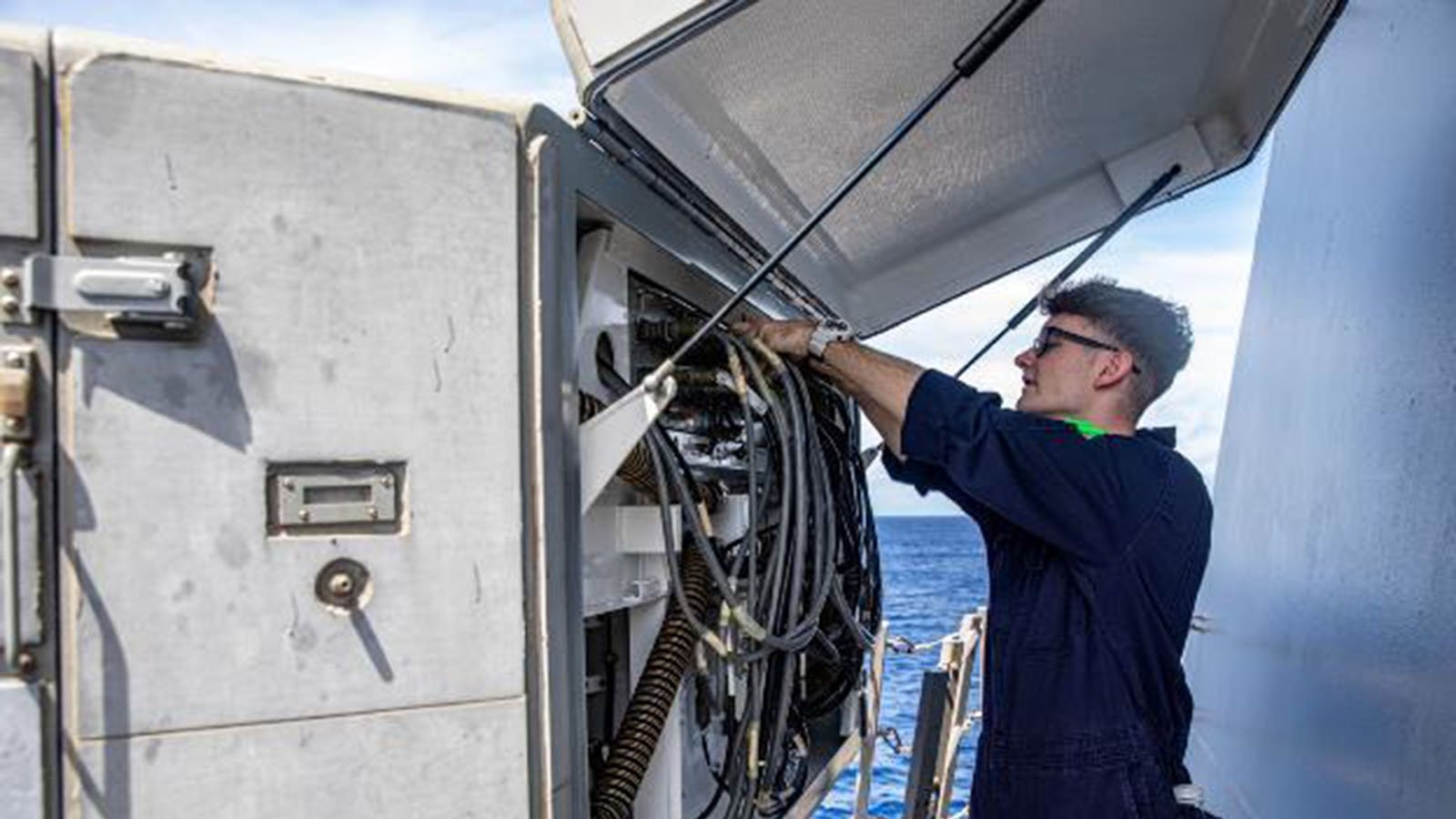
Cryptologic Technician Technical 2nd Class Ryan Smith, from Cave Creek, Ariz., conducts maintenance on an SLQ-32 electronic warfare suite aboard the Arleigh Burke-class guided-missile destroyer USS Halsey (DDG 97). (U.S. Navy photo by Mass Communication Specialist 3rd Class Jaimar Carson Bondurant)
WASHINGTON: Lockheed Martin is poised to demonstrate an offensive electronic warfare capability scaled for smaller vessels in the coming weeks during the international Rim of the Pacific exercise onboard a US Navy ship, a company official told Breaking Defense in an interview today.
The capability, which Lockheed and the Navy are calling “scaled EA,” or electronic attack, is being flown into Hawaii this week for installation onboard the ship, according to Joe Ottaviano, an executive at Lockheed overseeing its electronic warfare programs.
The core of Lockheed’s demonstration stems from the Surface Electronic Warfare Improvement Program, the Navy’s longstanding EW program of record. In essence, Ottaviano said, Lockheed has taken one of the latest iterations of the capability, dubbed Block III, and reduced its space, weight and power requirements to fit on a larger array of ships.
It’s an important development for two reasons. The first is that as the Navy has worked with several contractors to develop and upgrade SEWIP over the years, the service has always valued the notion of scaling the system’s requirements to fit the ship on which it is needed. (The “full” versions of the system, also called AN/SLQ-32, is destined for destroyers and won’t necessarily fit onboard smaller vessels such as a Littoral Combat Ship without modifications.)
The second is that while previous generations of SEWIP have in some cases been scaled to fit smaller vessels, they have lacked the electronic attack capability brought to the fleet through Block III.
Electronic warfare is not a new capability — SEWIP has been under development in some form since 2002 — but the descriptions of what it is are not always as clear as missiles being fired from destroyers or torpedoes from submarines.
RELATED: Why hasn’t Russia used its ‘full scope’ of electronic warfare?
Asked to put EW in layman’s terms, Ottaviano said SEWIP Block III has two jobs. The first is to detect a nearby enemy radar that is searching for a Navy ship. The second is to then use its electronic attack capability to “blind” the enemy’s radar, effectively hiding the SEWIP-equipped ship.
“He [the enemy] is shining a flashlight in the dark to try and find you,” Ottaviano said. “You shine a very bright flashlight back at him and now he can’t see anything.”
The trick for the Navy and Lockheed is being able to put that flashlight on any ship in the fleet, a competency the company hopes to demonstrate this summer as exercises at RIMPAC commence.
Major trends and takeaways from the Defense Department’s Unfunded Priority Lists
Mark Cancian and Chris Park of CSIS break down what is in this year’s unfunded priority lists and what they say about the state of the US military.


























